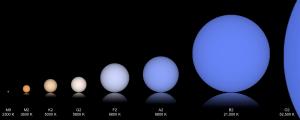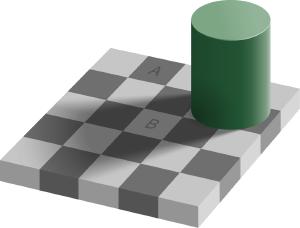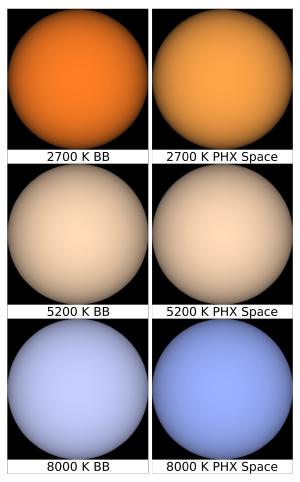Blog
True Colors
17 January 2021
 J.-V. Harre and R. Heller
J.-V. Harre and R. HellerColor is a funny thing in astronomy. We can measure the spectrum of colors an object emits quite accurately, but often that doesn’t tell us how the object would appear to the naked eye. Part of that has to do with the fact that our minds interpret colors relative to what surrounds them. The Moon, for example, often appears pale gray to our eyes but is actually the color of dark asphalt. To our minds, it appears gray relative to the dark black of space.
 Edward H. Adelson
Edward H. AdelsonAnother difficulty is the way astronomers capture images. Common digital cameras capture a color image directly. They have three types of pixel sensors sensitive to red, green, or blue light. They are similar to the way cones in our retinas work. But astronomers want to capture as much light as they possibly can. So they often use sensors that capture a wide range of colors. If they want to see only a particular color they can place a filter in front of the sensors.
To make a color image, astronomers collect several grayscale images for different ranges of wavelengths. Then they use software to assign a color to each image. If they choose colors accurate to the images captured, then they can create a fairly true-color image. But often astronomers create false-color images to highlight particular features, or to show wavelengths we can’t see such as radio or ultraviolet. Even visible-light images are often are tweaked to make them more beautiful rather than more accurate.
 J.-V. Harre and R. Heller
J.-V. Harre and R. HellerWith stars, color is even more challenging. Our naked eyes see them as faint points of light, which makes their colors harder to see. Most stars appear white, with a few appearing reddish or bluish. Most astronomical images also only show points of light. So our view of stars is strongly influenced by artistic renderings, which typically use unrealistic (though beautiful) colors. Even the astronomical names can be misleading. We talk of red dwarfs, white dwarfs, and blue giants, but are they really the colors we attribute to them?
To address this problem, a new work found a way to transform the spectra of a star into an accurate color portrayal.1 The team created a program that takes the visible range spectrum of a star and maps it to color sensitivity models for the red, green, and blue cones in our eyes. From this, they can create a digital image that is a reasonable simulation of how it would truly appear to our eyes.
They found a couple of interesting results. For example, red dwarfs, even the smallest and coolest of them, would not appear red to us. They would be a deep orange instead. Surprisingly, old white dwarfs wouldn’t appear white. We would see them as a bright pale orange. Their program could also be used for the spectra of nebulae and galaxies, and they have released the software publically for anyone to use. With a little effort, many more astronomical images can be presented in their true colors.
J.-V. Harre and R. Heller. “Digital color codes of stars.” arXiv preprint arXiv:2101.06254 (2021). ↩︎